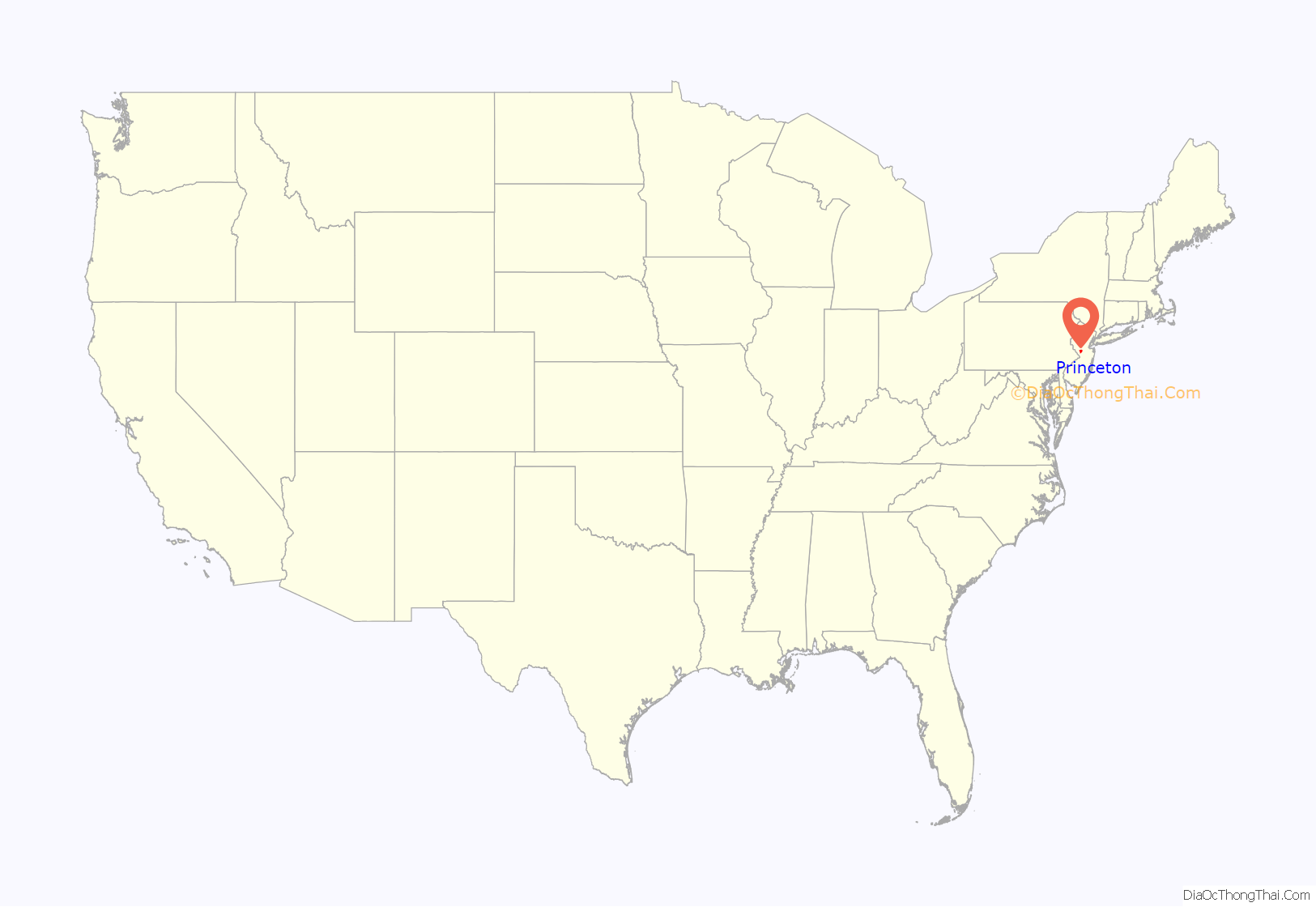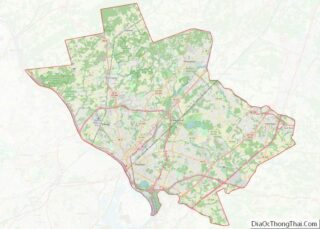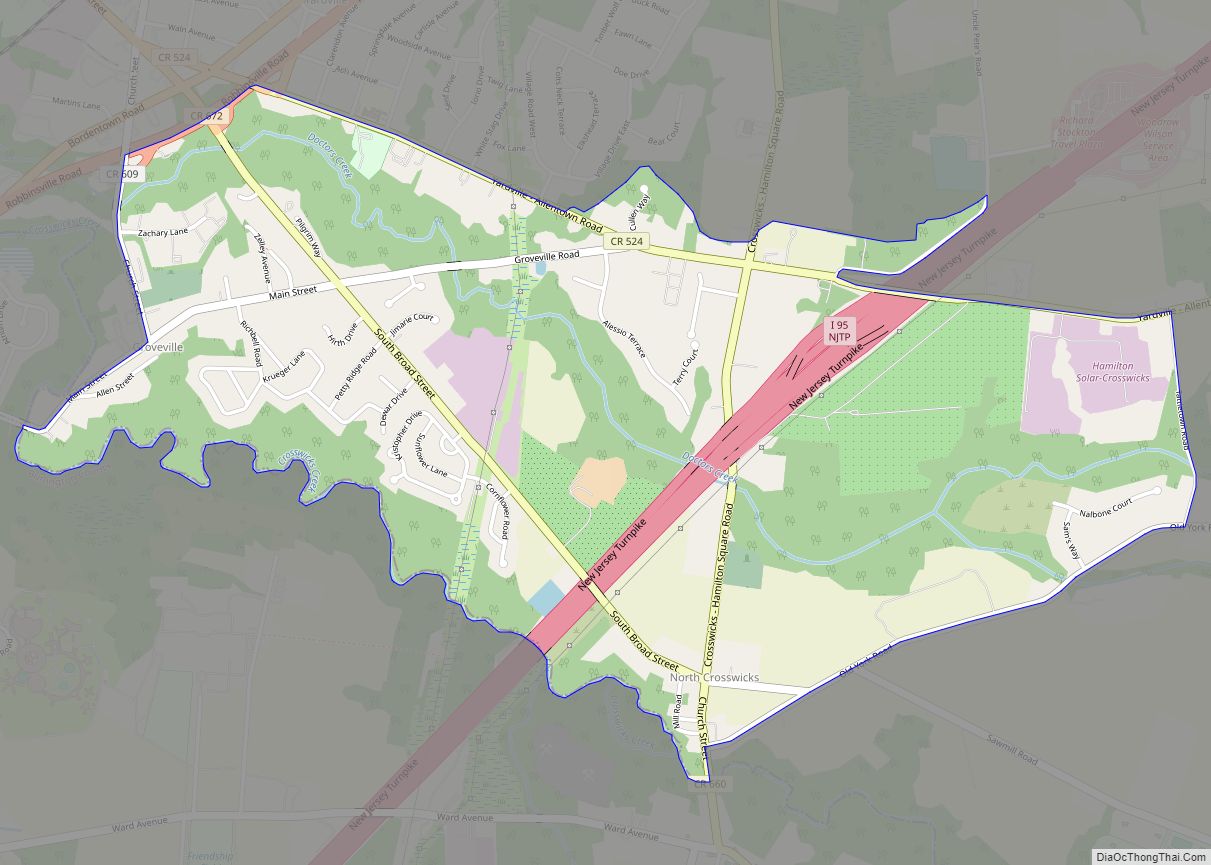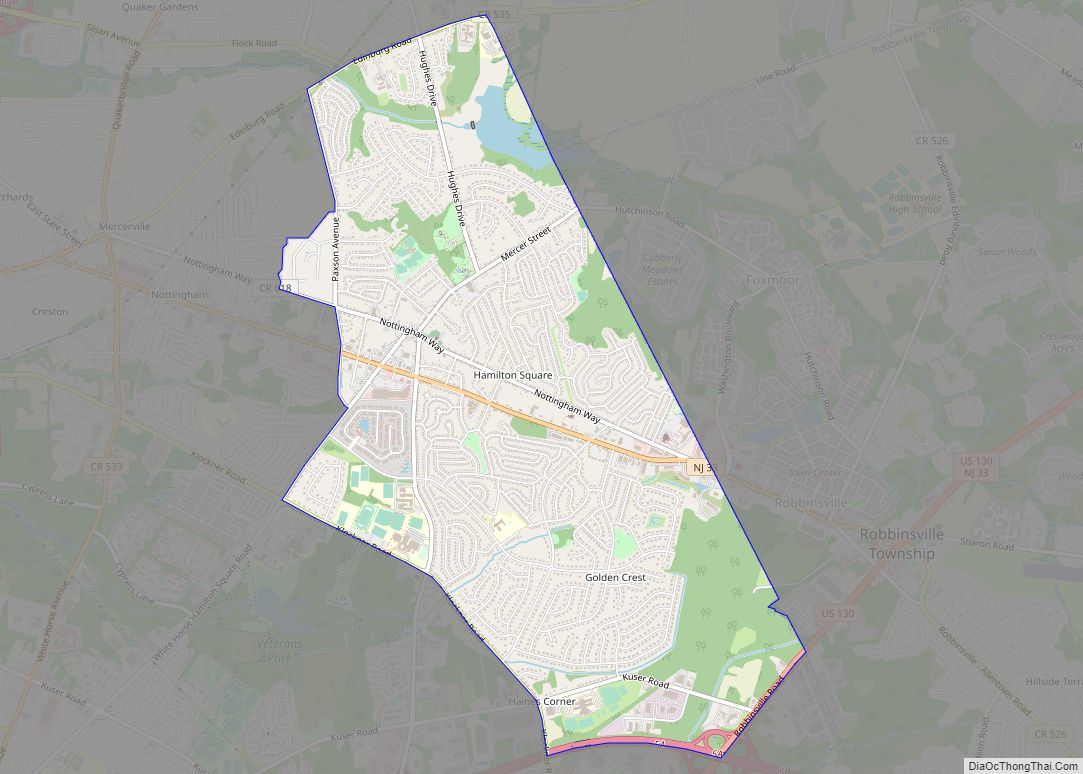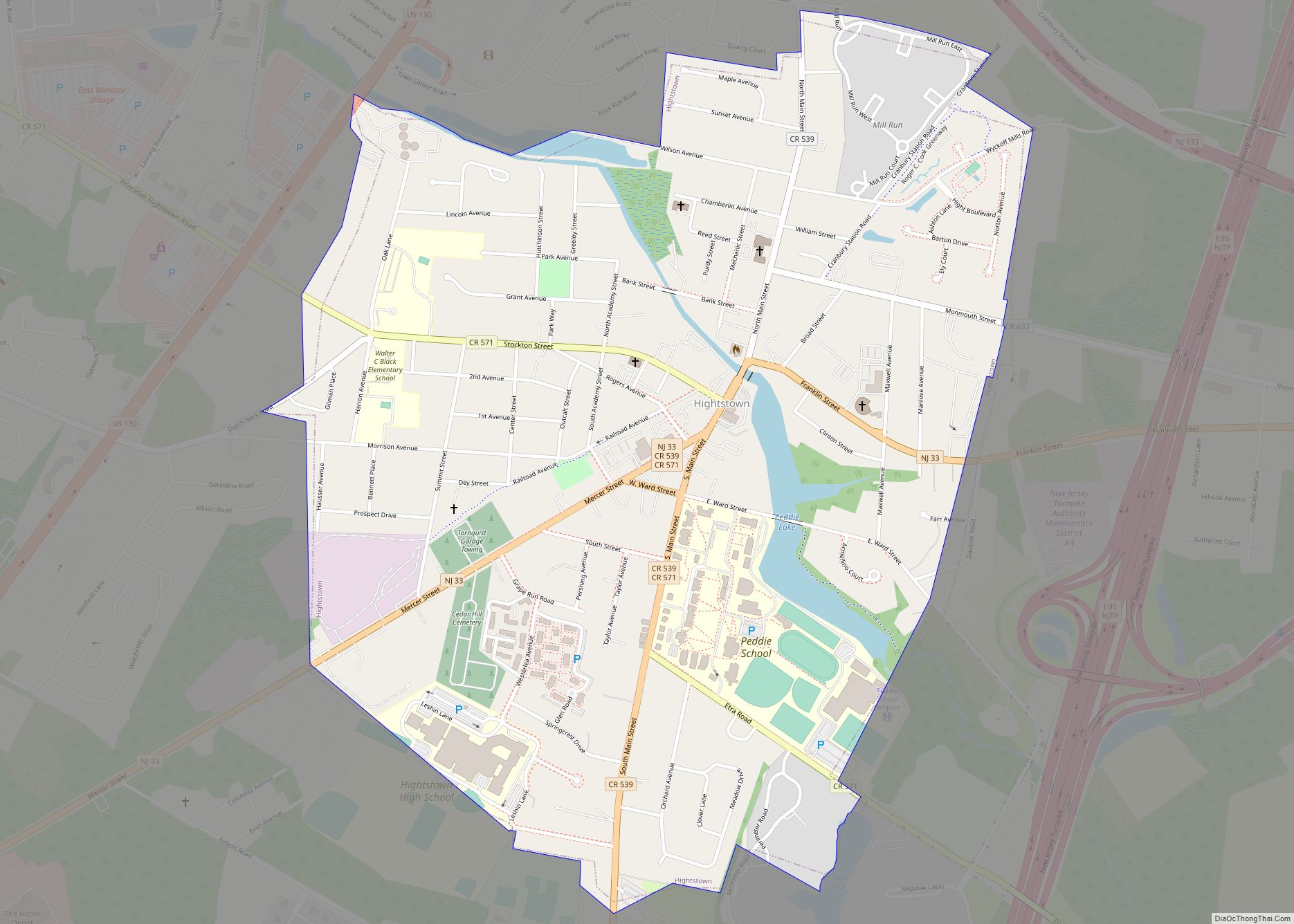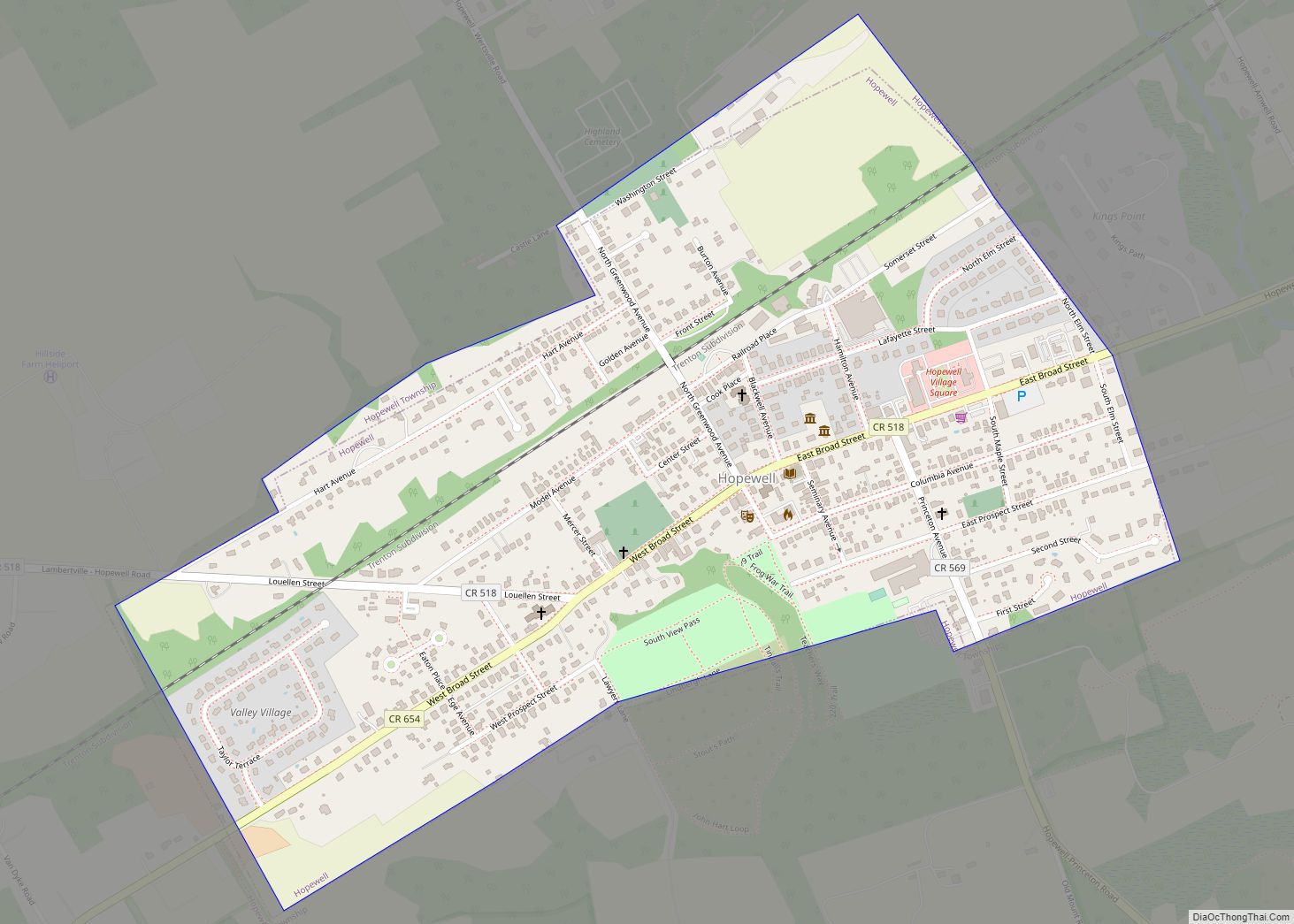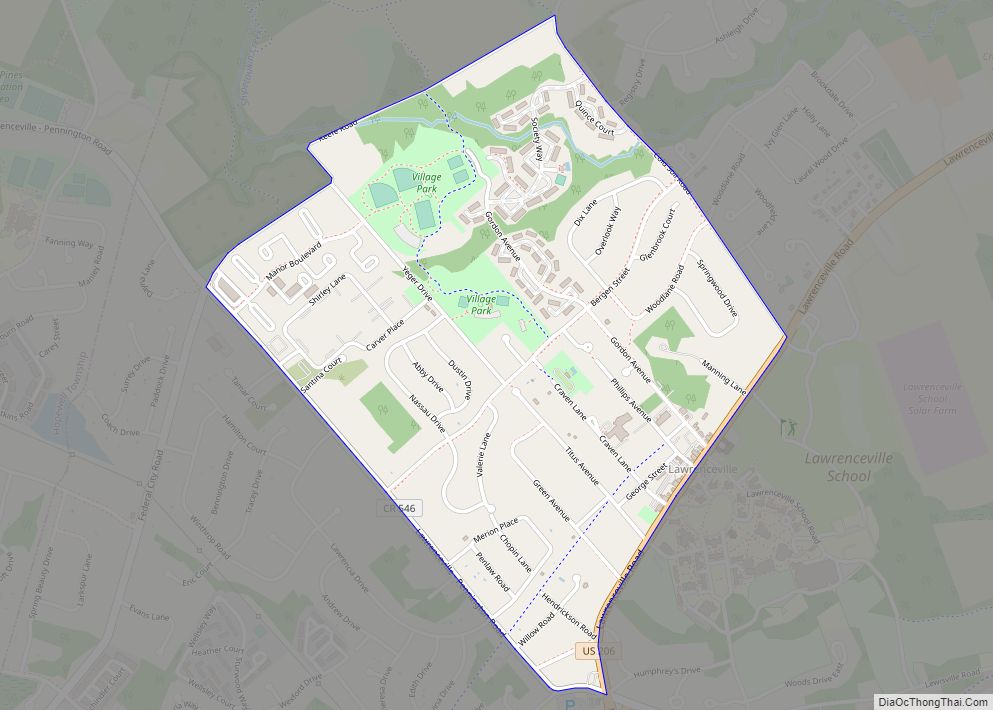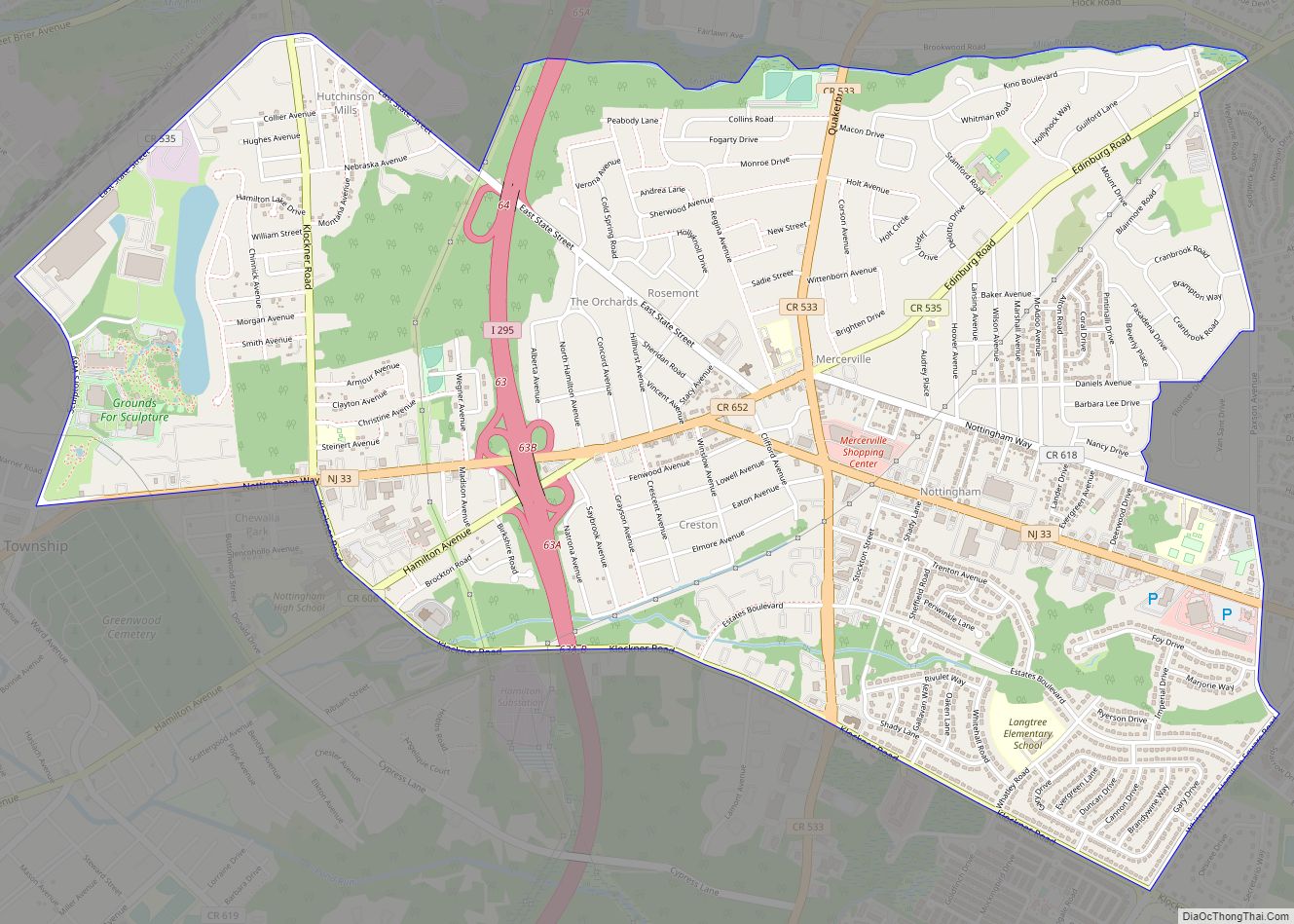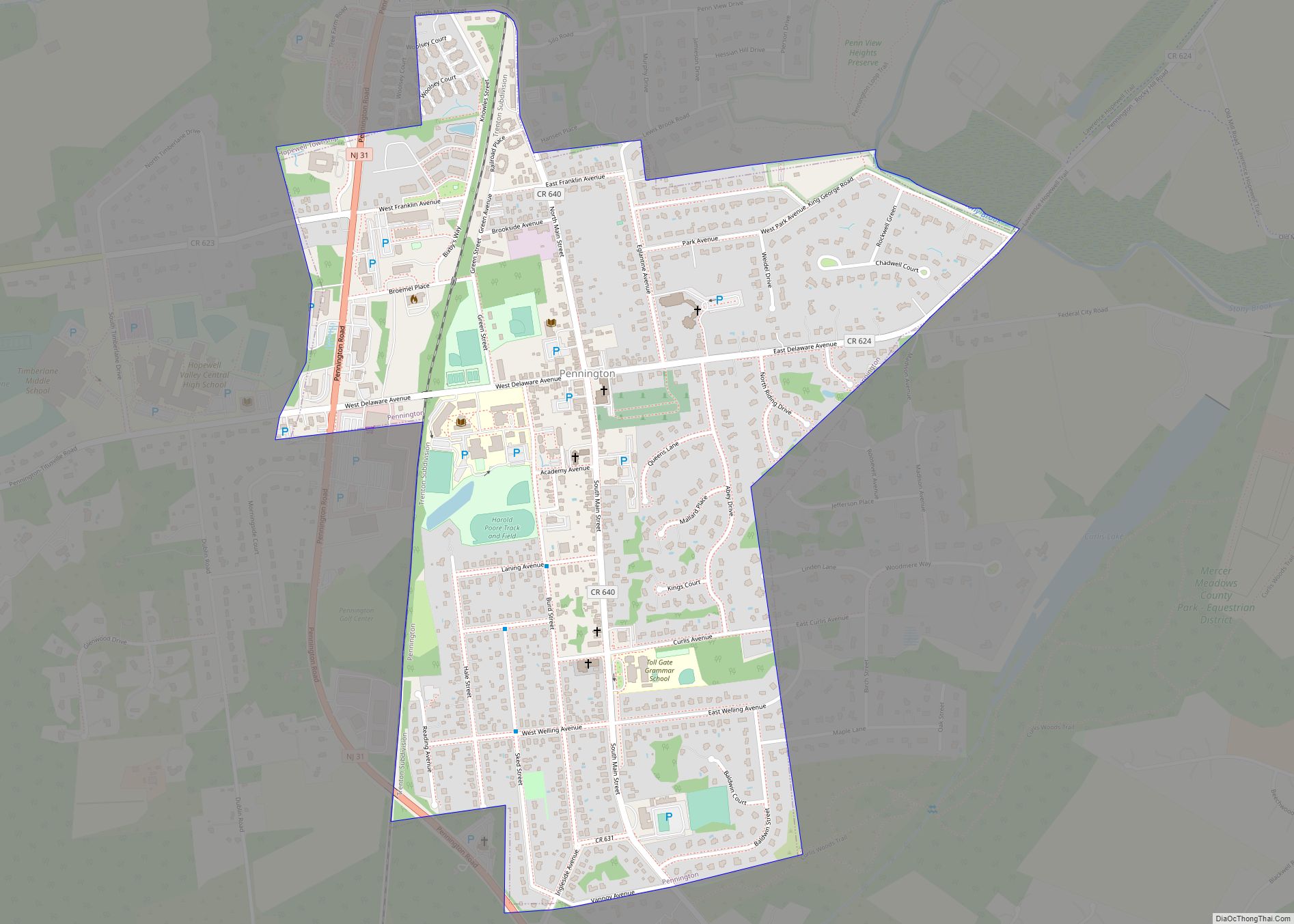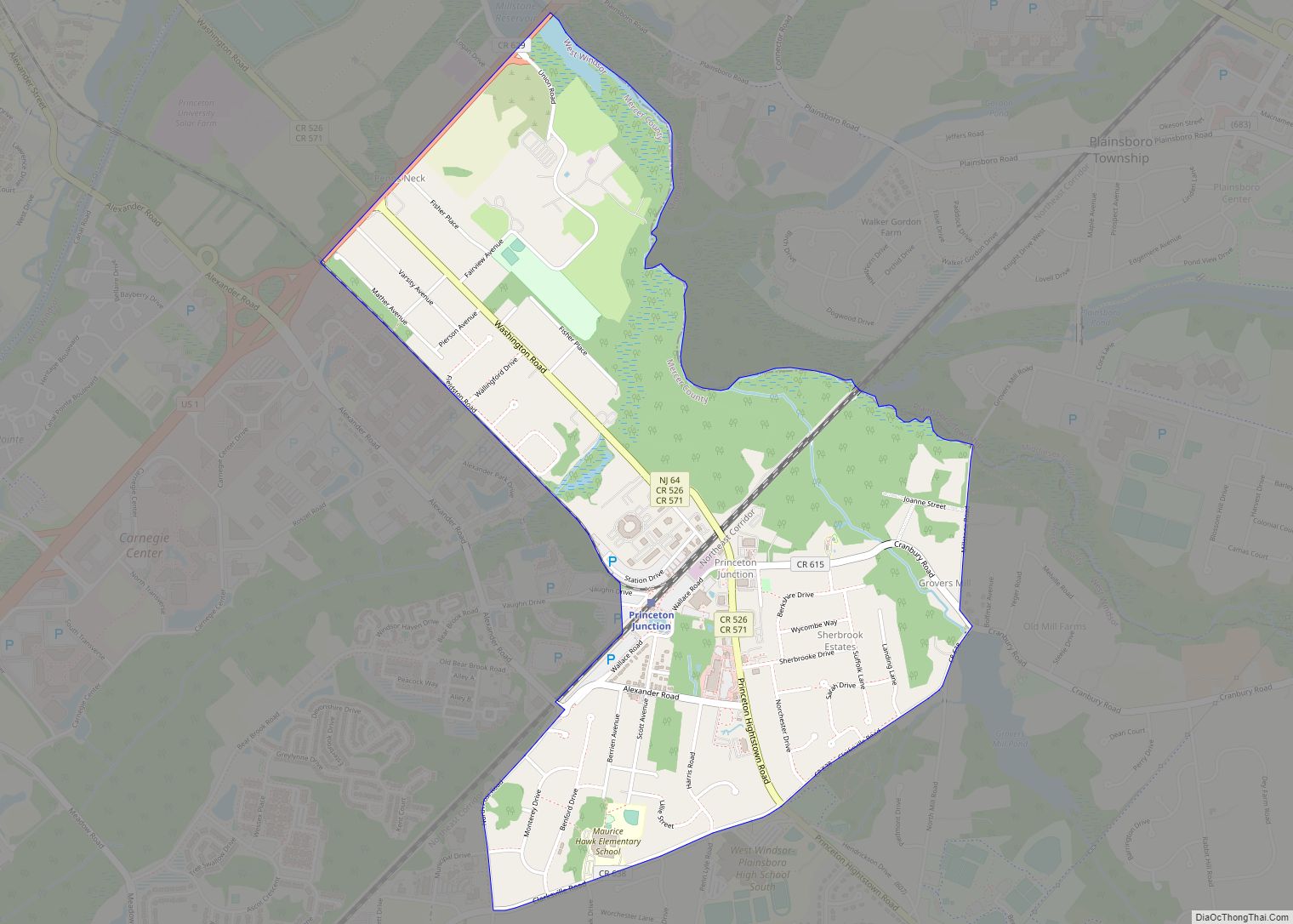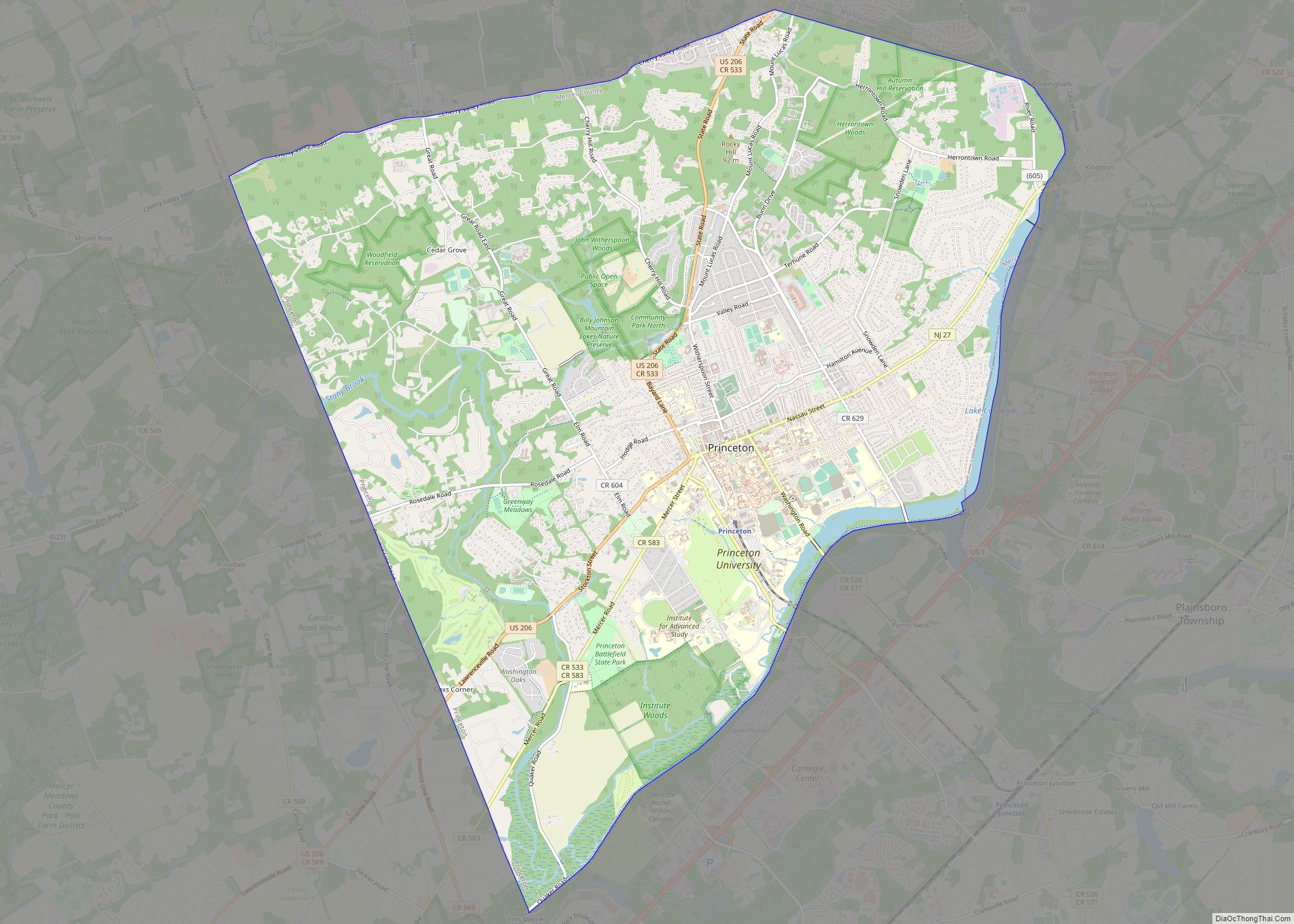Princeton is a municipality with a borough form of government in Mercer County, in the U.S. state of New Jersey. It was established on January 1, 2013, through the consolidation of the Borough of Princeton and Princeton Township, both of which are now defunct. As of the 2020 United States census, the borough’s population was 30,681, an increase of 2,109 (+7.4%) from the 2010 census combined count of 28,572. In the 2000 census, the two communities had a total population of 30,230, with 14,203 residents in the borough and 16,027 in the township.
Princeton was founded before the American Revolutionary War. The borough is the home of Princeton University, which bears its name and moved to the community in 1756 from the educational institution’s previous location in Newark. Although its association with the university is primarily what makes Princeton a college town, other important institutions in the area include the Institute for Advanced Study, Westminster Choir College, Princeton Plasma Physics Laboratory, Princeton Theological Seminary, Opinion Research Corporation, Bristol-Myers Squibb, Siemens Corporate Research, SRI International, FMC Corporation, The Robert Wood Johnson Foundation, Amrep, Church and Dwight, Berlitz International, and Dow Jones & Company.
Princeton is roughly equidistant from New York City and Philadelphia. It is close to many major highways that serve both cities (e.g., Interstate 95 and U.S. Route 1), and receives major television and radio broadcasts from each. It is also close to Trenton, New Jersey’s capital city, New Brunswick and Edison.
The New Jersey governor’s official residence has been in Princeton since 1945, when Morven in what was then Princeton Borough became the first governor’s mansion. In 1982, it was replaced by the larger Drumthwacket, a colonial mansion located in the former township, but not all have actually lived in these houses. Morven became a museum property of the New Jersey Historical Society.
Princeton was ranked 15th of the top 100 towns in the United States to Live In by Money magazine in 2005.
Throughout much of its history, the community was composed of two separate municipalities: a township and a borough. The central borough was completely surrounded by the township. The borough seceded from the township in 1894 in a dispute over school taxes; the two municipalities later formed the Princeton Public Schools, and some other public services were conducted together before they were reunited into a single Princeton in January 2013. Princeton Borough contained Nassau Street, the main commercial street, most of the university campus, and incorporated most of the urban area until the postwar suburbanization. The borough and township had roughly equal populations.
| Name: | Princeton |
|---|---|
| LSAD Code: | 00 |
| LSAD Description: | 0 |
| State: | New Jersey |
| County: | Mercer County |
| Incorporated: | January 1, 2013 |
| Total Area: | 18.41 sq mi (47.69 km²) |
| Land Area: | 17.95 sq mi (46.48 km²) |
| Water Area: | 0.47 sq mi (1.21 km²) 2.53% |
| Total Population: | 30,681 |
| Population Density: | 1,709.6/sq mi (660.1/km²) |
| Area code: | 609 |
| FIPS code: | 3460900 |
| Website: | www.princetonnj.gov |
Online Interactive Map
Click on ![]() to view map in "full screen" mode.
to view map in "full screen" mode.
Princeton location map. Where is Princeton?
History
Early history
The Lenape Native Americans were the earliest identifiable inhabitants of the Princeton area.
Europeans settled into the area in the late part of the 17th century, arriving from Delaware to settle West Jersey, and from New York to settle East Jersey, with the site destined to become Princeton being amid the wilderness between these two boroughs. The first European to find his home in the boundaries of the future municipality was Henry Greenland. He built his house in 1683 along with a tavern, where representatives of West and East Jersey met to set the boundaries between the two provinces. Greenland’s son-in-law Daniel Brimson inhabited the area by 1690, and left property in a will dated 1696.
Then, Princeton was known only as part of nearby Stony Brook. Nathaniel Fitz Randolph, a native of the town, attested in his private journal on December 28, 1758, that Princeton was named in 1724 upon the making/construction of the first house in the area by James Leonard, who first referred to the community as Princetown when describing the location of his large estate in his diary. The community was later known by a variety of names, including: Princetown, Prince’s Town and finally Princeton. The name Princeton was first used in 1724 and became common within the subsequent decade. Although there is no official documentary backing, the municipality is said to be named after King William III, Prince William of Orange of the House of Nassau. Another theory suggests that the name came from a large land-owner named Henry Prince, the son-in-law of a well-known English merchant, but no evidence backs this contention. A royal prince seems a more likely eponym for the settlement, as three nearby towns had names for royalty: Kingston, Queenstown (in the vicinity of the intersection of Nassau and Harrison Streets) and Princessville (Lawrence Township).
Princeton was described by William Edward Schenck in 1850 as having attained “no very considerable size” until the establishment of the College of New Jersey in the town. When Richard Stockton, one of the founders of the township, died in 1709 he left his estate to his sons, who helped to expand property and the population. Based on the 1880 United States Census, the population of Princeton comprised 3,209 persons (not including students). Local population has expanded from the nineteenth century. According to the 2010 Census, Princeton Borough had 12,307 inhabitants, while Princeton Township had 16,265. The numbers have become stagnant; since the arrival of the College of New Jersey, now Princeton University, in 1756, the town’s population spikes every year during the fall and winter and drops significantly over the course of the summer.
Revolution
In the pivotal Battle of Princeton in January 1777, George Washington forced the British to evacuate southern New Jersey. After the victory, Princeton hosted the first Legislature under the State Constitution to decide the State’s seal, governor and organization of its government. In addition, two of the original signers of the Declaration of Independence—Richard Stockton and John Witherspoon—lived in Princeton. Princetonians honored their citizens’ legacy by naming two streets in the downtown area after them.
On January 10, 1938, Henry Ewing Hale called for a group of citizens to establish a “Historical Society of Princeton.” Later the Bainbridge House, constructed in 1766 by Job Stockton, would be dedicated for this purpose. Previously the house was used once for a meeting of Continental Congress in 1783, a general office, and as the Princeton Public Library. The House is owned by Princeton University and is leased to the Princeton Historical Society for one dollar per year. The house has kept its original staircase, flooring and paneled walls. Around 70% of the house has been unaltered. Aside from safety features such as wheelchair access and electrical work, the house has been restored to its original look.
Government history
During the most stirring events in its history, Princeton was a wide spot in the road; the boundary between Somerset County and Middlesex County ran right through Princeton, along the high road between New York and Philadelphia, now Nassau Street. When Mercer County was formed in 1838, part of West Windsor Township was added to the portion of Montgomery Township which was included in the new county, and made into Princeton Township; the area between the southern boundary of the former Borough and the Delaware and Raritan Canal was added to Princeton Township in 1853. Princeton Borough became a separate municipality in 1894.
In the early nineteenth century, New Jersey boroughs had been quasi-independent subdivisions chartered within existing townships that did not have full autonomy. Princeton Borough received such a charter in 1813, as part of Montgomery and West Windsor Townships; it continued to be part of Princeton Township until the Borough Act of 1894, which required each township to form a single school district; rather than do so, Princeton Borough petitioned to be separated. (The two Princetons combined their public school systems in the decades before municipal consolidation.) Two minor boundary changes united the then site of the Princeton Hospital and of the Princeton Regional High School inside the Borough, in 1928 and 1951 respectively.
Princeton Road Map
Princeton city Satellite Map
Geography
Princeton is located just south of a long, curving ridge known as Princeton Ridge. As Princeton is in a low-lying area, there have been issues with cell phone signals. According to the U.S. Census Bureau, Princeton had a total area of 18.41 square miles (47.69 km), including 17.95 square miles (46.48 km) of land and 0.47 square miles (1.21 km) of water (2.53%).
Cedar Grove, Port Mercer, Princeton Basin, and Jugtown are unincorporated communities that have been absorbed into Greater Princeton over the years, but still maintain their own community identity.
Princeton borders the municipalities of Hopewell Township, Lawrence and West Windsor Townships in Mercer County; Plainsboro Township and South Brunswick Township in Middlesex County; and Franklin Township and Montgomery Township in Somerset County.
United States Postal ZIP codes for Princeton include 08540, 08541 (Educational Testing Service), 08542 (largely the old Borough), 08543 (PO boxes), and 08544 (the University).
See also
Map of New Jersey State and its subdivision: Map of other states:- Alabama
- Alaska
- Arizona
- Arkansas
- California
- Colorado
- Connecticut
- Delaware
- District of Columbia
- Florida
- Georgia
- Hawaii
- Idaho
- Illinois
- Indiana
- Iowa
- Kansas
- Kentucky
- Louisiana
- Maine
- Maryland
- Massachusetts
- Michigan
- Minnesota
- Mississippi
- Missouri
- Montana
- Nebraska
- Nevada
- New Hampshire
- New Jersey
- New Mexico
- New York
- North Carolina
- North Dakota
- Ohio
- Oklahoma
- Oregon
- Pennsylvania
- Rhode Island
- South Carolina
- South Dakota
- Tennessee
- Texas
- Utah
- Vermont
- Virginia
- Washington
- West Virginia
- Wisconsin
- Wyoming
